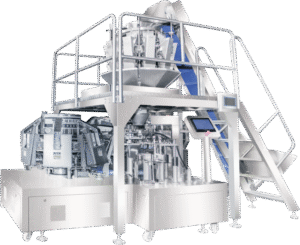Is Vacuum Sealing Meat a Good Idea?
Table of Contents
Introduction
Food preservation has evolved significantly over the years, and vacuum sealing has emerged as one of the most effective methods for extending the shelf life of meat. Whether you’re a home cook looking to reduce food waste, a hunter processing game, or someone who simply wants to take advantage of bulk meat purchases, vacuum sealing offers compelling advantages. But is it really a good idea for everyone? This comprehensive guide explores the ins and outs of vacuum sealing meat to help you make an informed decision.
What Is Vacuum Sealing and How Does It Work?
Vacuum sealing is a preservation method that removes air from packaging before sealing it. The process involves placing meat in a specially designed plastic bag or pouch, extracting the air using a vacuum sealer machine, and then heat-sealing the bag to create an airtight environment. This elimination of oxygen is crucial because oxygen is what allows bacteria, mold, and other microorganisms to thrive and cause food spoilage.
The science behind vacuum sealing is straightforward yet remarkably effective. When air is removed, the oxidation process that leads to freezer burn and deterioration is significantly slowed down. Additionally, without oxygen, aerobic bacteria—the type that commonly spoils meat—cannot survive or reproduce. This creates an environment where meat can be stored for much longer periods than traditional storage methods would allow, whether in the refrigerator or freezer.
The Benefits of Vacuum Sealing Meat
The advantages of vacuum sealing meat are numerous and can have a significant impact on both your wallet and your culinary experiences. First and foremost, vacuum-sealed meat lasts three to five times longer than meat stored in conventional plastic wrap or containers. In the freezer, properly vacuum-sealed meat can maintain its quality for two to three years, compared to just six months with traditional freezing methods. This extended shelf life means less food waste and more flexibility in meal planning.
Beyond preservation, vacuum sealing helps maintain the meat’s quality and flavor. By preventing exposure to air, the meat retains its moisture, texture, and nutritional value far better than other storage methods. The meat won’t suffer from freezer burn—those unsightly gray or brown patches that not only look unappetizing but also affect taste and texture. Additionally, vacuum sealing prevents cross-contamination of flavors in your refrigerator or freezer, ensuring that your beef doesn’t taste like fish or vice versa.
From a practical standpoint, vacuum-sealed packages are much more space-efficient than bulky containers or loosely wrapped items. They stack neatly in your freezer, allowing you to organize and maximize your storage space. For those who buy meat in bulk to save money, vacuum sealing makes it practical to purchase larger quantities without worrying about spoilage. The method also facilitates better portion control, as you can seal individual servings or meal-sized portions, making it easier to thaw only what you need.
Understanding the Meat Chamber Vacuum Sealer
When it comes to vacuum sealing equipment, the meat chamber vacuum sealer represents the professional-grade option that serious meat preservers often choose. Unlike external or suction vacuum sealers that work from outside the bag, a meat chamber vacuum sealer places the entire bag inside a chamber where air is evacuated from both the chamber and the bag simultaneously. Once the air is removed, the bag is sealed, and air is returned to the chamber, creating an extremely tight seal.
The meat chamber vacuum sealer offers several distinct advantages over standard external vacuum sealers. Most notably, it can handle liquids and marinades without any issues—a common problem with external sealers that can suck liquids into the machine and cause damage. This makes chamber sealers ideal for marinating meat, as you can add marinades directly to the bag before sealing, allowing for deeper flavor penetration due to the vacuum pressure forcing the marinade into the meat’s fibers.
Chamber sealers also provide more consistent and reliable seals, which is crucial when you’re storing expensive cuts of meat for extended periods. They typically work with less expensive chambered bags rather than the specialized embossed bags required by external sealers, which can result in significant cost savings over time. While a meat chamber vacuum sealer represents a larger initial investment—often ranging from several hundred to several thousand dollars—for hunters, butchers, or families who process large quantities of meat regularly, the long-term benefits in efficiency, reliability, and cost-per-seal often justify the expense.

Potential Drawbacks to Consider
Despite its many benefits, vacuum sealing meat isn’t without potential disadvantages that should be carefully considered. The initial investment can be substantial, particularly if you opt for a quality meat chamber vacuum sealer. While basic external vacuum sealers can be found for under one hundred dollars, they may not be durable enough for frequent use, and the ongoing cost of specialized bags adds up over time. You’ll need to evaluate whether your meat storage needs justify this expense.
There’s also a learning curve associated with proper vacuum sealing technique. Improper sealing can lead to seal failures, which mean wasted bags and potentially spoiled meat. You need to ensure bags are properly positioned, that there’s adequate space for sealing, and that moisture or meat particles don’t interfere with the seal. Additionally, certain types of meat require special considerations—for example, meat with sharp bones may puncture bags, and delicate fish can be crushed by excessive vacuum pressure.
One critical food safety consideration involves botulism risk. Clostridium botulinum, the bacteria that causes botulism, thrives in low-oxygen environments. While this risk is primarily associated with improperly canned low-acid foods, vacuum-sealed meat stored at improper temperatures could theoretically create conditions for this bacteria to grow. This is why it’s absolutely essential to keep vacuum-sealed meat refrigerated or frozen at appropriate temperatures and to follow proper thawing procedures. Never leave vacuum-sealed meat at room temperature for extended periods.
Best Practices for Vacuum Sealing Meat
To maximize the benefits and minimize risks when vacuum sealing meat, following established best practices is essential. Start with fresh, high-quality meat—vacuum sealing won’t improve meat that’s already beginning to spoil; it simply preserves meat in its current state. If you’re sealing fresh meat, try to do so as soon as possible after purchase or butchering to lock in maximum freshness.
Before sealing, pat meat dry with paper towels to remove excess moisture, which can interfere with proper sealing. For raw meat with sharp bones, consider wrapping pointed edges with paper towels or removing bones entirely when possible. If you’re sealing meat for freezing, you can pre-freeze it for an hour or two to solidify any liquids and prevent them from being sucked into the sealer during the vacuum process.
Label every package with the type of meat, cut, weight, and date of sealing. This simple step prevents confusion later and helps you rotate your stock, using older packages first. When it comes to storage, vacuum-sealed meat should be refrigerated at 40°F (4°C) or below, or frozen at 0°F (-18°C) or below. Even vacuum-sealed meat has storage limits—while it lasts much longer than conventionally stored meat, it shouldn’t be kept indefinitely.
For thawing, the safest method is to place vacuum-sealed meat in the refrigerator overnight. If you need to speed up the process, you can submerge the sealed package in cold water, changing the water every 30 minutes. However, for food safety reasons, some experts recommend removing meat from vacuum-sealed packaging before thawing, especially if thawing in water, to prevent the low-oxygen environment from potentially promoting anaerobic bacteria growth during the thawing process.

Conclusion: Is It Worth It?
So, is vacuum sealing meat a good idea? For most households and especially for those who buy meat in bulk, hunt, fish, or simply want to reduce food waste, the answer is a resounding yes. The benefits—extended shelf life, preserved quality, space efficiency, and reduced food waste—typically outweigh the costs and minor inconveniences for anyone who regularly stores meat.
That said, vacuum sealing may not be necessary for everyone. If you purchase small quantities of meat that you use within a few days, or if you have limited freezer space and budget constraints, traditional storage methods may suffice. However, even casual cooks often find that the convenience and cost savings of buying meat on sale and vacuum sealing it for later use quickly justify the investment.
If you decide to invest in vacuum sealing, consider your specific needs when choosing equipment. A basic external vacuum sealer may be adequate for occasional use, while serious meat preservers will appreciate the superior performance and long-term cost savings of a meat chamber vacuum sealer. Regardless of which type you choose, following proper food safety guidelines and best practices will ensure that vacuum sealing becomes a valuable tool in your kitchen arsenal, helping you enjoy high-quality meat while minimizing waste and maximizing value.
